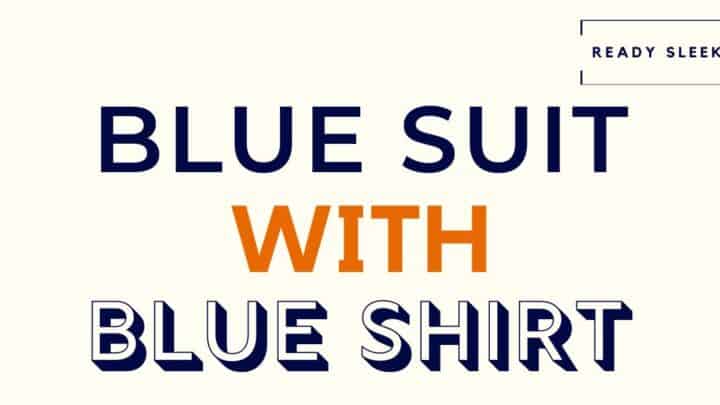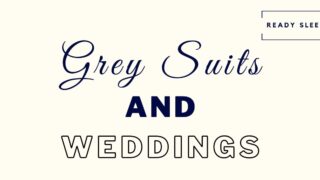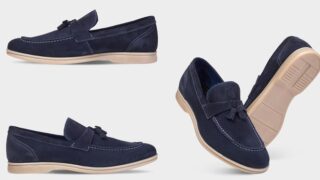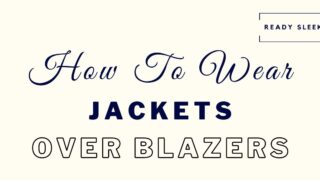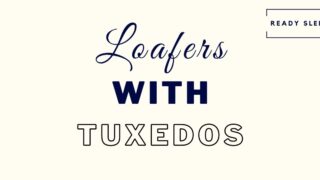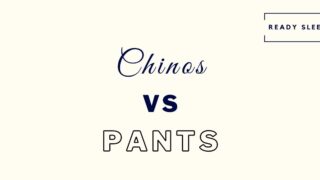Blue-on-blue isn’t always appropriate. But in the right setting, it can really turn some heads. The question is, can you wear a blue suit with a blue shirt?
Blue suits can easily be worn with blue shirts in formal, business-professional, and smart-casual settings. In general, it’s best to keep the shade of the blue suit darker than that of the shirt.
But as always, there’s more to it than that.
Here are some crucial tips for pulling off the blue suit and blue shirt combination in the most impressive way possible.
Let’s get to it.
1. The Dress Code Matters
This classic combination would be appropriate for formal, business-professional, and smart-casual settings.
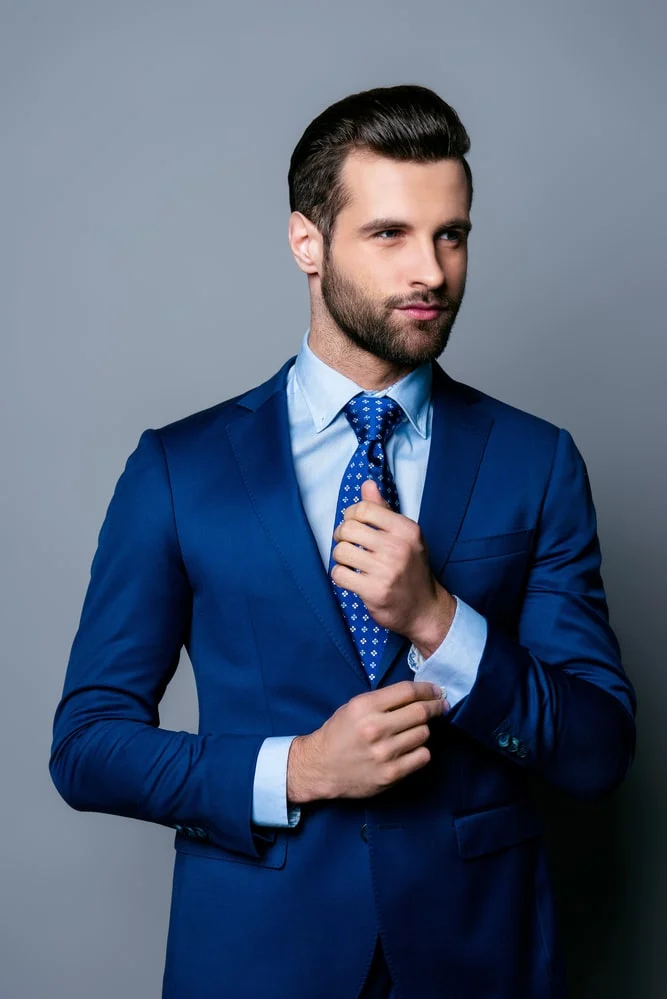
However, the type and shade of blue suit and shirt you choose will depend on the specific dress code. We’ll talk about that in the next tip.
One dress code you should avoid wearing it for is business-casual.
Suits, in general, should not be worn in business-casual settings. A blazer and chinos/dress pants combination would be more appropriate.
But the dress code isn’t always explicitly stated and sometimes it can be tough to know whether an outfit would be appropriate or not.
Here’s a brief rundown on the appropriate dress codes listed above, together with events/settings where they’d be applicable:
- Formal – Evening galas, weddings, funerals, dressy evening social events.
- Business-Professional – Corporate workplaces, office settings, conferences.
- Smart-Casual – Sporting events, birthday parties, garden parties, and so on.
2. Dark Blue Suits For Formal Settings
In formal settings, suits in dark shades of blue such as navy, midnight blue, and royal blue would be more appropriate.
In “smart-casual” settings you could go for either a dark, medium or light shade of blue. You’ve got more freedom to experiment.

In business-professional settings such as corporate office environments, dark blue suits are also encouraged.
While blue will never be quite as formal as black or charcoal grey, dark blue suits are traditionally considered appropriate in formal settings unless it’s specifically stated otherwise.
The more casual the setting, the more likely it is that a suit in a lighter shade of blue would be welcome.
Think baby blue or sky blue.
However, there are also medium shades of blue you could consider if you didn’t want to go that light.
Teal and steel blue would fall into this category.
3. Keep The Suit Darker Than The Shirt
As a general principle, try to keep the shade of the blue suit darker than that of the blue shirt.
In general, this will produce the most traditional and aesthetically pleasing end result.
Examples:
- A navy blue suit with a baby blue shirt
- A steel blue suit with a sky blue shirt
Wearing the opposite – eg. a light blue suit with a dark blue shirt – usually comes across as attention-grabbing and awkward.
However, this principle can sometimes lead to some issues. Specifically, it can make wearing a light blue suit problematic at times.
Let’s say you’re wearing a baby blue suit. The problem arises when you try to find a blue shirt that’s lighter in shade than the already very light-colored suit.
If you’re finding that this is the case, it’s pretty likely that you’d be better off wearing a white shirt instead.
Ultimately, it’s easier to pull off a dark/medium blue suit with a blue shirt for this very reason.
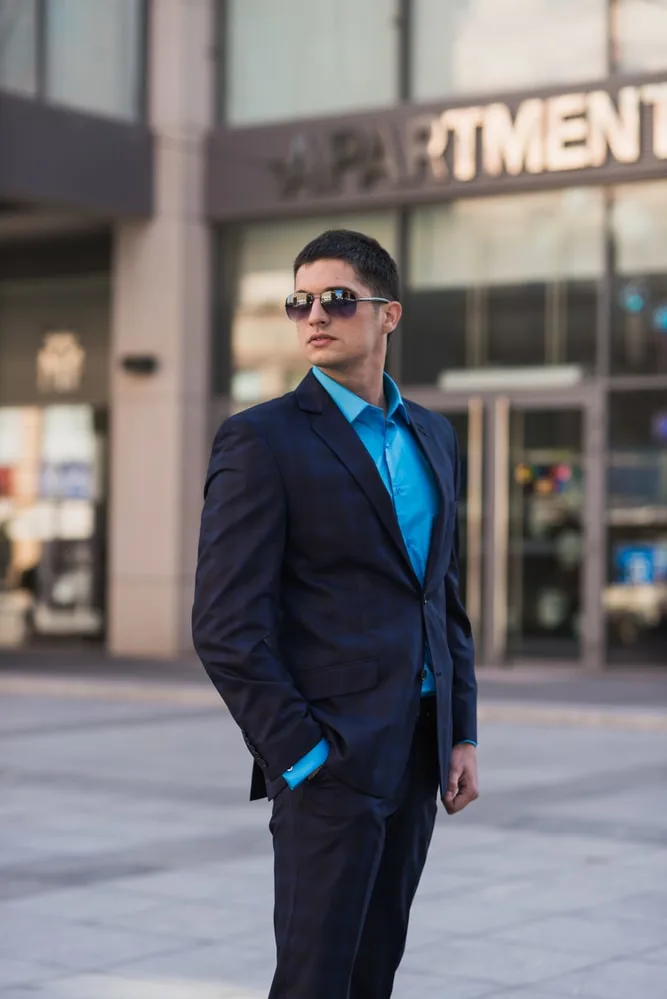
4. Consider The Blue Suit Fabric
Any suit can look very different depending on what it’s made from
Blue suits are no exception.
A blue suit can look very formal or very casual due to what fabric it’s made from and how it’s woven.
So, it isn’t just the color of the suit you should consider when targeting a specific dress code. It’s also the fabric.
In general, shiny and wrinkle-resistant fabrics will have a more formal look, while those with a rougher, wrinklier, and napped texture will look more casual.
Blue worsted wool suits are ideal for formal and business-professional settings because they have a natural sheen to them and don’t wrinkle very easily at all.
More casual suit fabrics include serge, linen, tweed, and even flannel. These would be perfect for smart-casual settings where a laid-back aesthetic is encouraged.
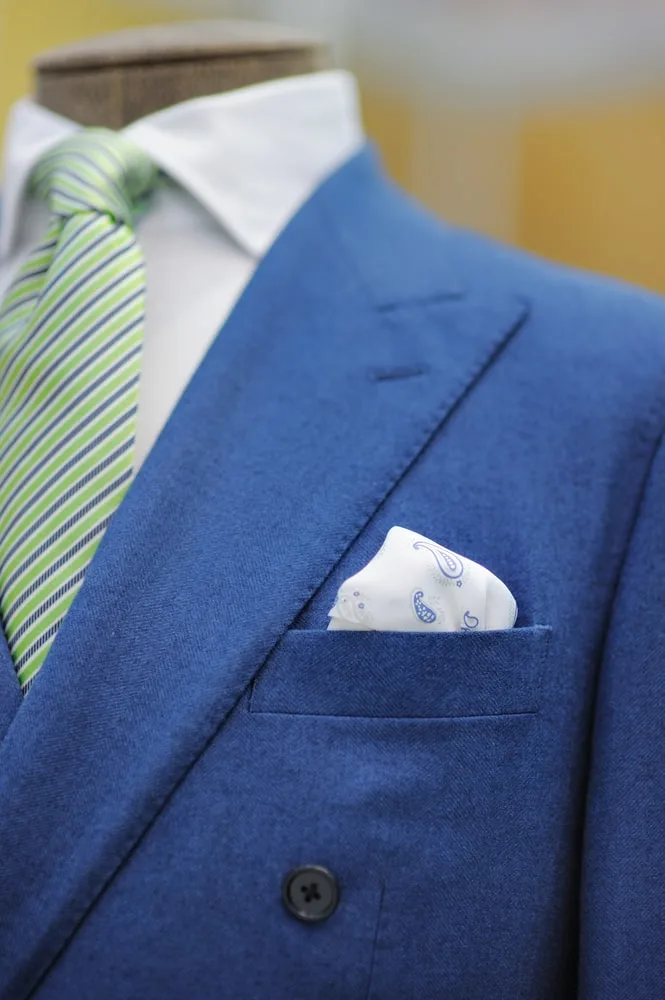
Image From Deposit Photos
5. Choose The Right Tie Color
When wearing a blue suit and blue shirt, consider wearing a blue, pink, red, black, grey, green, or yellow tie.
You’ve got a very wide range of colors to choose from, each with its own advantages and disadvantages.
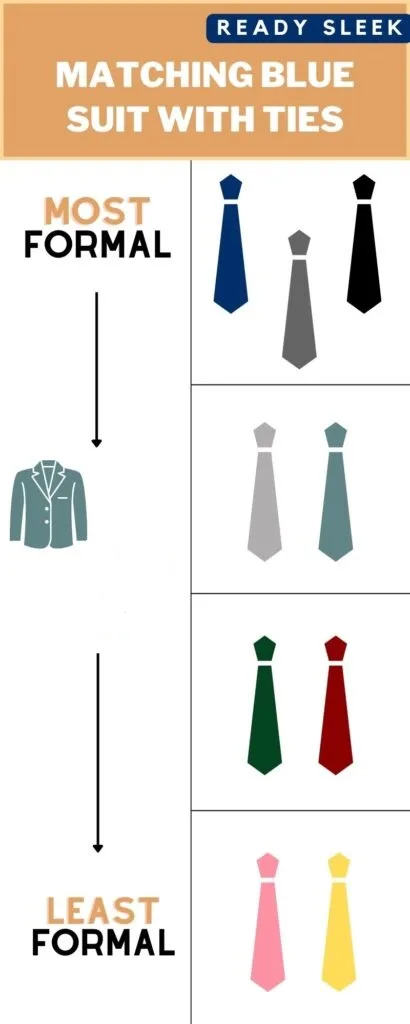
The easiest options would be either going for a monochromatic combination (i.e a blue tie) or a neutral-colored tie (i.e grey or black).
If you’d prefer a more vibrant suit and tie combination, consider the color wheel.
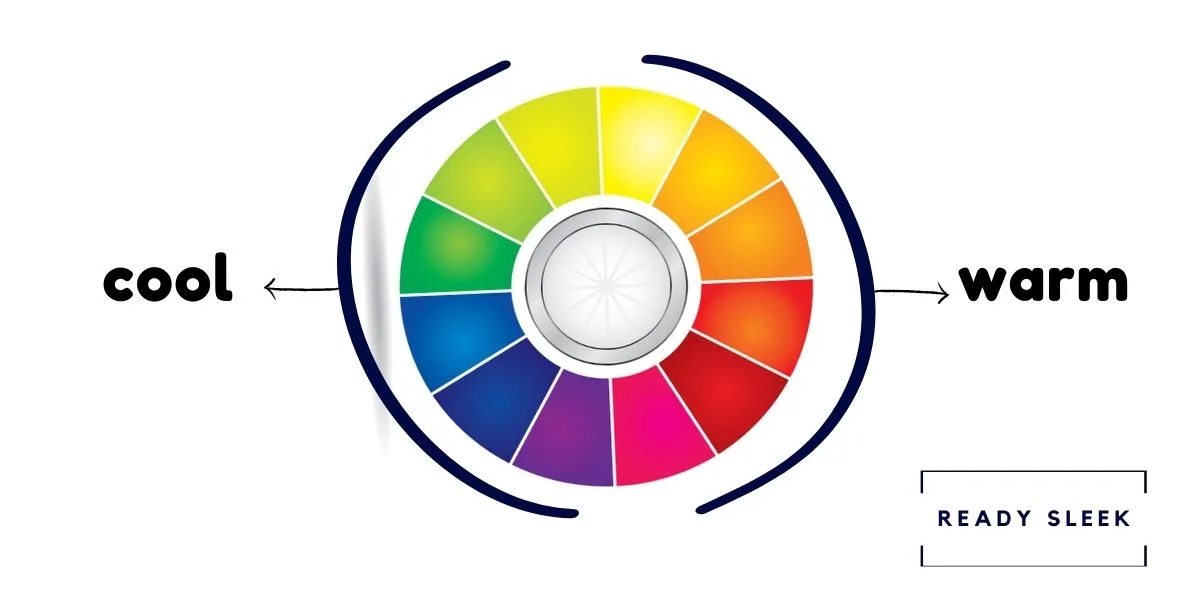
Blue is a “cool” color and can be combined with other “cool” colors such as green with good effect. A blue suit, blue shirt, and green tie combination works well for this reason.
If you’d prefer a more high-contrast combination, consider a “warm” colored tie such as pink, red, or yellow.
Note that this combination will usually come across as more casual than a neutral-colored tie would.
When dressing for a formal setting, a monochromatic blue or neutral-colored tie would be the best option.
Note that if you did go for a blue tie, try to choose a shade that’s noticeably darker than that of the shirt.

Here’s a summary:
| Blue Suit, Blue Shirt, And Blue Tie | Formal Or Business-Professional |
| Blue Suit, Blue Shirt, And Pink Tie | Smart-Casual |
| Blue Suit, Blue Shirt, And Red Tie | Smart-Casual |
| Blue Suit, Blue Shirt, And Black Tie | Formal Or Business-Professional |
| Blue Suit, Blue Shirt, And Grey Tie | Formal Or Business-Professional |
| Blue Suit, Blue Shirt, And Green Tie | Smart-Casual |
| Blue Suit, Blue Shirt, And Yellow Tie | Smart-Casual |
6. Brown Or Black Dress Shoes Are Best
Blue is a pretty bold and in-your-face color.
While it’s relatively easy to coordinate, you’ll want to keep things subtle with your other items to prevent an overwhelming amount of color in your outfit.
This is definitely relevant when it comes to footwear.
In short, go for brown or black dress shoes. They’re the most traditional options and will always work.
Which of those you choose does depend on the – yes, you guessed it – the dress code.
The more formal the setting is, the more likely it is that your blue suit and blue shirt combination would look better with a pair of black dress shoes.
Black shoes will always look dressier than brown shoes.
However, if you feel as though a formal setting isn’t that formal or it’s simply a business-professional workplace, a dark brown pair of dress shoes would usually be perfectly fine.
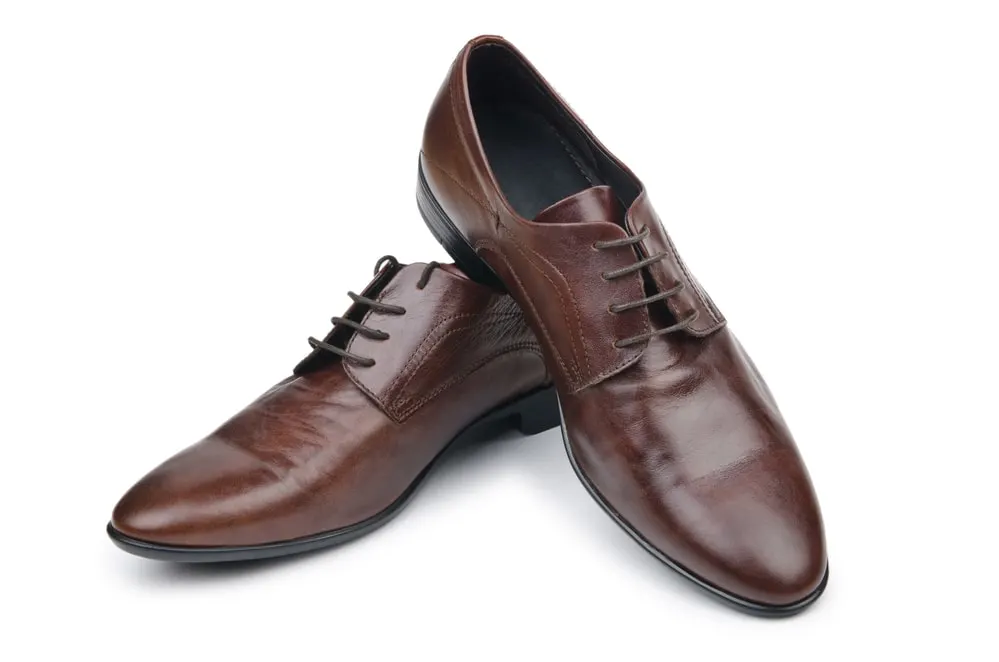
In smart-casual settings, feel free to go for shoes in tan, cognac, and other light shades of brown.
They’re great because they make an otherwise straightforward suit and shirt combination look a little more interesting.
The contrast between a blue suit and a light/medium brown pair of shoes is noticeable but still subtle.
7. Add Contrast With The Pocket Square
If you do wear a pocket square (strongly encouraged), use it as an opportunity to add some contrast to your outfit.
But do so cautiously.
In business-professional settings, you’ll want to stick to a simple straight fold of a neutral-colored pocket square (white or grey would be best).
In formal settings, it isn’t quite as simple.
Yes, there are formal events where you don’t want to draw attention to yourself. Funerals would be a good example.
Here, you’ll want to go for a similarly subtle and understated neutral-colored pocket square if you choose to wear one at all.
However, there are also formal settings where colorful pocket squares are common and work well. These are usually celebratory events such as wedding ceremonies, wedding receptions, evening balls, and so on.
Here, you could consider a more colorful and vibrant pocket square to add some contrast to the otherwise monochromatic blue suit and blue shirt combination.
The same would go for a smart-casual setting where colorful pocket squares wouldn’t be considered out of place at all.
But do put some thought into your choice of pocket square.
With blue being the primary color of the rest of your outfit, consider a pocket square in a similarly “cool” color such as green or purple.
If you’d prefer a more attention-grabbing option (more suitable for smart-casual settings), consider a “warm” colored pocket square in red or yellow.
Ready Sleek founder. Obsessed with casual style and the minimalist approach to building a highly functional wardrobe. Also a fan of classic, vintage hairstyles.

